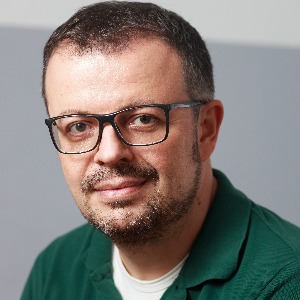Title : Orthopaedic manual therapy for TemporoMandibular Disorders (TMD): Integrating osteopathic techniques with physiotherapy
Abstract:
Background: Temporo Mandibular Disorders (TMD) affect up to one-third of adults across the lifespan and are a leading cause of non-dental orofacial pain. While patient education, self-management, and physiotherapy are core components of care, many clinics now combine physiotherapy with osteopathic manual therapy (OMT). Evidence suggests manual interventions can reduce pain and improve mouth opening and jaw function when delivered as part of a multimodal program; however, clinical integration strategies vary and real-world implementation details are often under-reported.
Objective: To present a pragmatic, clinic-tested integration model in which orthopaedic manual therapy and targeted osteopathic techniques are combined with guideline-based physiotherapy for TMD, and to share feasibility, safety, and early outcome data from an outpatient practice.
Methods: We outline a structured care pathway used at a specialized clinic: (1) triage and red-?ag screening; (2) stratified education (sleep hygiene, parafunction awareness, diet modification); (3) manual therapy package tailored by phenotype—joint-dominant, muscle- dominant, or mixed. Techniques include gentle mobilizations, muscle energy techniques, balanced ligamentous tension for the TMJ and cervical segments, cranial and diaphragm- focused approaches to address breathing/postural coupling, and targeted neurodynamic and cervico-thoracic interventions where indicated. Exercise therapy emphasizes jaw relaxation, controlled opening with deviation correction, deep cervical ?exor training, scapular control, and graded exposure. Outcome tracking uses pain intensity (NRS), Jaw Functional Limitation Scale (JFLS-8/20), maximum mouth opening (MMO), and patient global impression over 4–6 weeks. Safety is captured through standardized adverse-event logs.
Results (Practice Experience): In routine care, the program has demonstrated high feasibility and good adherence, with most patients reporting meaningful short-term improvements in pain and function alongside increased MMO. Adverse events have been minor and transient (e.g., short-lived soreness). Case vignettes will illustrate decision-making for joint- vs muscle-dominant presentations, the role of diaphragm work in patients with bruxism and stress-linked hyperventilation patterns, and coordination with dentistry (e.g., splints) and psychology when indicated.
Conclusions: A structured integration of OMT with physiotherapy for TMD is feasible, safe, and clinically useful in day-to-day practice. Standardized screening, phenotype-guided technique selection, and consistent outcome tracking are key to reproducibility. Further controlled studies are warranted to quantify effect sizes and identify responders.
Clinical Implications: Clinicians can adopt a phase-based pathway that blends TMJ-specific manual therapy with cervical/thoracic and diaphragm interventions, targeted exercise, and education—while monitoring outcomes and safety using simple clinic-friendly tools.
Keywords: temporomandibular disorders; manual therapy; osteopathy; orofacial pain; rehabilitation




